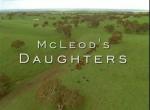AustLit
Latest Issues
Notes
-
The above list of authors is a complete list of script-writers for the series, regardless of the number of scripts each produced. For a more detailed list (by episode), please see list of episodes below.
Publication Details of Only Known VersionEarliest 2 Known Versions of
Works about this Work
-
Girls in Big Hats, Huge TV Hit
2016
single work
column
— Appears in: The Advertiser , 6 August 2016; (p. 28) -
Styles of National and Global Integration : Charting Media Transformations in Australian Cities
2012
single work
criticism
— Appears in: Studies in Australasian Cinema , March vol. 5 no. 3 2012; (p. 223-238) 'Australian film and television production is concentrated in two principal cities, Sydney and Melbourne, and dispersed among the metropolitan centres of Brisbane, Adelaide and Perth and the next rung of cities and regions including the Gold Coast, Canberra, Hobart and Darwin among others. National and international integration is reshaping the relations among, the television programming taking place within, and the production capabilities and infrastructures of these cities. This article considers the national distribution of screen production capabilities and how media design interests in their coordination, development and control of production activity interact with location interests seeking to sustain production work across these cities.' (Editor's abstract)
-
Defining a National Brand : Australian Television Drama and the Global Television Market
2011
single work
criticism
— Appears in: Journal of Australian Studies , March vol. 35 no. 1 2011; (p. 33-47)'One option for television drama producers confronted by rising production standards and increasing costs is to become more international in orientation, leading to speculation that national and cultural boundaries may become less important at the higher end of drama series production. Television drama would then become the ‘decontextualised space for universal modes of storytelling’, with lifestyle and reality television formats the more likely vehicles for expressing ‘cultural specificity’. But national and cultural boundaries do matter. The particularities of national television cultures – local policy configurations, historical and cultural influences, technology uptake, the size and wealth of national economies – all impact on the ability of television producers to engage with the global trade in television fiction. This article examines the way in which this global trade internalises and works with national particularities through the sense of a national brand that locates Australian content within a certain value hierarchy. The following discusses three successful examples of internationalised television programming – McLeod's Daughters (2001–2009), Sea Patrol (2007–), and the children's series H2O: Just Add Water (2006–) – that have worked within international perceptions that differentiate Australian content according to perceived cultural sensibilities and national image.'
Source: Abstract.
-
Styles of National and Global Integration : Charting Media Transformations in Australian Cities
2012
single work
criticism
— Appears in: Studies in Australasian Cinema , March vol. 5 no. 3 2012; (p. 223-238) 'Australian film and television production is concentrated in two principal cities, Sydney and Melbourne, and dispersed among the metropolitan centres of Brisbane, Adelaide and Perth and the next rung of cities and regions including the Gold Coast, Canberra, Hobart and Darwin among others. National and international integration is reshaping the relations among, the television programming taking place within, and the production capabilities and infrastructures of these cities. This article considers the national distribution of screen production capabilities and how media design interests in their coordination, development and control of production activity interact with location interests seeking to sustain production work across these cities.' (Editor's abstract)
-
Girls in Big Hats, Huge TV Hit
2016
single work
column
— Appears in: The Advertiser , 6 August 2016; (p. 28) -
Defining a National Brand : Australian Television Drama and the Global Television Market
2011
single work
criticism
— Appears in: Journal of Australian Studies , March vol. 35 no. 1 2011; (p. 33-47)'One option for television drama producers confronted by rising production standards and increasing costs is to become more international in orientation, leading to speculation that national and cultural boundaries may become less important at the higher end of drama series production. Television drama would then become the ‘decontextualised space for universal modes of storytelling’, with lifestyle and reality television formats the more likely vehicles for expressing ‘cultural specificity’. But national and cultural boundaries do matter. The particularities of national television cultures – local policy configurations, historical and cultural influences, technology uptake, the size and wealth of national economies – all impact on the ability of television producers to engage with the global trade in television fiction. This article examines the way in which this global trade internalises and works with national particularities through the sense of a national brand that locates Australian content within a certain value hierarchy. The following discusses three successful examples of internationalised television programming – McLeod's Daughters (2001–2009), Sea Patrol (2007–), and the children's series H2O: Just Add Water (2006–) – that have worked within international perceptions that differentiate Australian content according to perceived cultural sensibilities and national image.'
Source: Abstract.
Awards
- 2006 nominated Logie Awards — Most Outstanding Drama Series
- 2004 nominated Logie Awards — Most Outstanding Drama Series
- South Australia,




